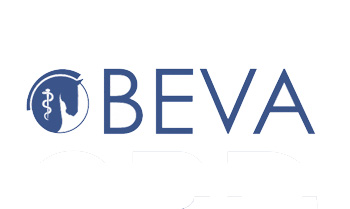Brucella canis: what vets need to know
14 Feb 2024
06 Apr 2022 | Lucy Grieve
As large animal vets, we spend a huge amount of time in our cars, and thus transport accounts for a large proportion of our environmental impact. Reduce your carbon footprint today by following these hints from BEVA’s Lucy Grieve and Callum Haseler.

Subtle changes like slowing down and accelerating smoothly can make a big difference to fuel consumption. There are companies which provide eco-driving courses and it is well worth investing in one of these at your practice.
If your car allows, monitor your fuel efficiency and set a target to improve your average miles per gallon (mpg). Make sure your vehicle is well maintained – the RAC report that properly inflated tyres can improve fuel efficiency by up to 2%.
Finally, make sure you keep to the speed limit. According to the AA, driving at 80 mph uses up to 25% more fuel than driving at 70 mph.
Not only will this reduce your carbon footprint, route planning also presents an opportunity to save valuable time during a busy day.
If your practice doesn’t already, consider making use of ‘area days’ to reduce the mileage between calls. In your practice management system, location headers are helpful as they combine multiple diaries to show roughly where all of the vets are for each appointment, making it easier to get an overview and reduce the chance of two vets visiting the same locale in the same day, or vets needing to repeatedly visit a location in one day.
Use smart route planners (such as provided by the website https://www.speedyroute.com/) to calculate the most efficient route with multiple visits. If your practice management system has a route planner function built in, make sure you keep postcodes and client addresses up to date to make the most out of it.
Travel from home if possible and check ahead in the diary to avoid unnecessary trips to collect drugs/equipment. For emergencies and unexpected extra journeys, using a WhatsApp group to communicate quickly and easy with the full team can help to work out who is closest at that time and reduce miles travelled by the team.
This is a team effort, so make sure your admin team are on board to make optimising travel a priority. It may also be helpful to designate a member of the team to specifically check the diary for glaringly obvious amendments to routes for the following day.
Consider whether staff can travel together, especially when taking nurses to calls. Coronavirus has added a layer of complication this past year but, provided the relevant rules are adhered to, a shared journey also presents a good opportunity for that much-needed social contact!
Consider lift-sharing for office or practice-based staff. A recent survey by Mobilityways found that 92% of commuters have one or more colleagues living within one mile of them with whom they could share a lift to work. Start a conversation about this with your team to see who could benefit from this, reducing your team’s environmental impact and saving themselves money on fuel.
Plan for equipment and medications required the day before or in the morning, so vets do not need to do extra journeys back to the practice. When issues do arise, consider whether another team member making the journey might be more efficient.
Avoid clients having to drive individually to the practice by offering to post drugs or accept poo samples by post.
Think about the journeys your suppliers make too. When ordering drugs and supplies from wholesalers, aim to do this in as few orders as possible to reduce the number of van journeys required.
Consider whether an animal requires a physical visit, or whether a telemedicine consult might suffice.
Using teleconferencing for practice meetings and CPD sharing can have huge benefits too. A comparison between videoconferencing and in-person meetings suggested that videoconferencing takes at most 7% of the energy/carbon of an in-person meeting.
As well as reducing the practice’s overall carbon footprint, active commuting has been shown to have a number of health benefits, and studies have demonstrated a link between active commuting and lower risk of all-cause mortality, cardiovascular disease and diabetes. Consider setting up a practice running or cycling club!
Prioritise efficiency when buying a new vehicle. Choose the smallest, most efficient vehicle that will do the job. We all love a 4x4, but do we really need one?
Go electric - Yes, this really is an option for large animal vets. With the latest electric vehicles offering a range of up to 250-300 miles on a single charge, there’s no reason an EV won’t manage even the longest days in practice. But if you’re still not convinced, try starting with a practice vehicle that isn’t used for on-call work, such as a communal practice van.
Alternatively, don’t let perfect be the enemy of good: consider a plug-in hybrid electric vehicle. Whilst they have their drawbacks, they represent a step in the right direction and play an important role in improving air quality in towns and cities.
As large animal vets, transport represents a large part of our carbon footprint, and thus a huge opportunity to reduce our environmental impact. By planning routes more intelligently, driving more efficiently and making sustainability a priority, we can make a big difference.
There are lots of ways to save energy in practice, so make sure you watch the Greener Veterinary Practice webinar on using water and energy responsibly for more tips and a chance to ask questions.
Get tailored news in your inbox and online, plus access to our journals, resources and support services, join the BVA.
Join Us Today